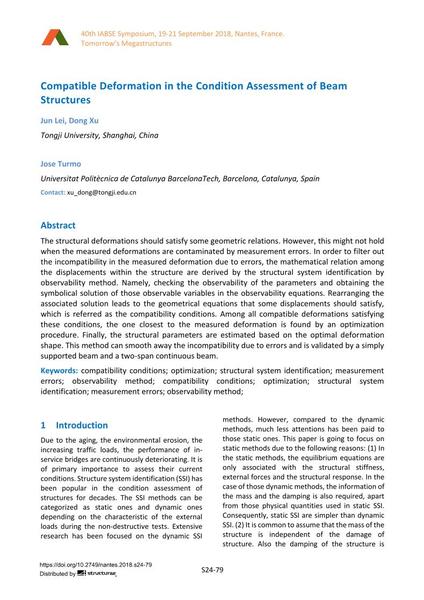Compatible Deformation in the Condition Assessment of Beam Structures

|
|
|||||||||||
Bibliographic Details
| Author(s): |
Jun Lei
(Tongji University, Shanghai, China)
Dong Xu (Tongji University, Shanghai, China) José Turmo |
||||
|---|---|---|---|---|---|
| Medium: | conference paper | ||||
| Language(s): | English | ||||
| Conference: | IABSE Symposium: Tomorrow’s Megastructures, Nantes, France, 19-21 September 2018 | ||||
| Published in: | IABSE Symposium Nantes 2018 | ||||
|
|||||
| Page(s): | S24-79 | ||||
| Total no. of pages: | 7 | ||||
| DOI: | 10.2749/nantes.2018.s24-79 | ||||
| Abstract: |
The structural deformations should satisfy some geometric relations. However, this might not hold when the measured deformations are contaminated by measurement errors. In order to filter out the incompatibility in the measured deformation due to errors, the mathematical relation among the displacements within the structure are derived by the structural system identification by observability method. Namely, checking the observability of the parameters and obtaining the symbolical solution of those observable variables in the observability equations. Rearranging the associated solution leads to the geometrical equations that some displacements should satisfy, which is referred as the compatibility conditions. Among all compatible deformations satisfying these conditions, the one closest to the measured deformation is found by an optimization procedure. Finally, the structural parameters are estimated based on the optimal deformation shape. This method can smooth away the incompatibility due to errors and is validated by a simply supported beam and a two-span continuous beam. |
||||
| Keywords: |
optimization structural system identification observability method compatibility conditions measurement errors
|
||||
